Search results for: 'mit'
-
 Römische Silberfibel
Römische SilberfibelMassive Fibel aus Silber. Fundort England, aus alter britischer Sammlung. Museumswürdiges Exemplar.
Price: on request Roman marble portrait, possibly Traianus Decius
Roman marble portrait, possibly Traianus DeciusExtraordinarily preserved marble head. Comparable in quality with portraits of Roman emperors on exhibition in large museums. Either a portrait type not yet surely attributed to Traianus Decius, or a private portrait of the Decius era imitating the official imperial portraits.
Price: on request Museumswürdiger Glockenkrater aus dem 4. Jh. v. Chr.
Museumswürdiger Glockenkrater aus dem 4. Jh. v. Chr.Auf der einen Seite Komposition aus sitzendem jugendlichem Dionysos und einem stehenden Mädchen, auf der anderen Seite zwei Manteljünglinge. Perfekt erhalten.
Price: on request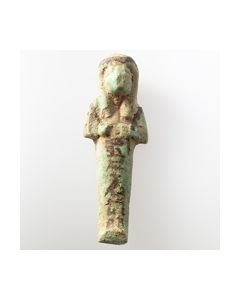 Ushabti des Nes-ta-hi
Ushabti des Nes-ta-hiÄgyptische Statuette, rund 80mm hoch, 22. Dynastie. Ausgeprägte Gesichtszüge, schöne blau-grüne Fayence. Hieroglyphen in etwa Osiris, Nes-ta-hi, maa-kheru.
Price: on request Ushabti des Nes-ta-hi
Ushabti des Nes-ta-hiÄgyptische Statuette, rund 80mm hoch, 22. Dynastie. Ausgeprägte Gesichtszüge, schöne blau-grüne Fayence. Hieroglyphen in etwa Osiris, Nes-ta-hi, maa-kheru.
Price: on request Ushabti des Nes-ta-hi
Ushabti des Nes-ta-hiÄgyptische Statuette, rund 80mm hoch, 22. Dynastie. Ausgeprägten Gesichtszüge, schöne blau-grüne Fayence. Hieroglyphen in etwa Osiris, Nes-ta-hi, maa-kheru.
Price: on request Ushabti des Nes-ta-hi
Ushabti des Nes-ta-hiÄgyptische Statuette, rund 80mm hoch, 22. Dynastie. Ausgeprägten Gesichtszüge, schöne blau-grüne Fayence. Hieroglyphen in etwa Osiris, Nes-ta-hi, maa-kheru.
Price: on request Massive antike Pfeilspitze aus Eisen
Massive antike Pfeilspitze aus EisenQuadratischer Querschnitt, massive Ausführung. Für Alter und Material sehr schwache Korrosion. 9. - 13. Jh. n. Chr.
Price: on request Große römische Bronzeglocke
Große römische BronzeglockeMuseumsstück. Massiv, schöne grüne Patina. Römische Kaiserzeit, 1. - 2. Jh. n. Chr. Höhe 58 mm, Durchmesser 63 mm.
Price: on request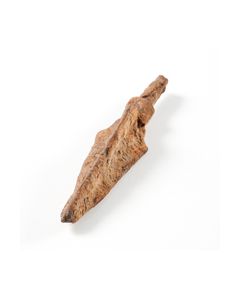 Antike Pfeilspitze aus Eisen
Antike Pfeilspitze aus EisenDreiflüglige Pfeilspitze aus Eisen. Schönes, recht großes Belegstück. Indo-Skythisch, 2. Jh. v. Chr. - 4. Jh. n. Chr.
Price: on request Published Roman fibula with celtic design
Published Roman fibula with celtic designAncient fibula from the Roman province of Britain. The design can be attributed to the celtic tribe of the Trinovantes or Iceni. From the famous Hattatt collection. Published twice.
Price: on request Steinzeitlicher Bohrer
Steinzeitlicher BohrerTypischer steinzeitlicher Bohrer, Spätmesolithikum. Gefunden auf Seeland. Toller weißer Stein, 76mm lang.
Price: on request Roman surgical probe made of bronze
Roman surgical probe made of bronzeThe so-called specillum was standard issue for roman doctors. Similar probes are still in use today. Very fine craftsmanship of an ancient surgical instrument.
Price: on request Roman specillum
Roman specillumThe so-called specillum is a surgical probe. It was standard issue for roman doctors. Similar probes are still in use today. 1st to 4th cent. AD.
Price: on request Roman jar with flat handle from Lopodunum
Roman jar with flat handle from LopodunumPerfectly preserved piece. Found in Ladenburg, Baden-Wuerttemberg, Germany.
Price: on request Bronze pin from Iron Age Luristan
Bronze pin from Iron Age LuristanThree decorative spheres form an elegant pin head. Colourful bronze patina.
Price: on request Römischer Präsentierteller aus England
Römischer Präsentierteller aus EnglandKonisch gestalteter Standfuß, kunstvoll gestaltet. Leicht konischer Körper, hohe, gerade Lippe. Fundort: Colchester in Essex, England.
Price: on request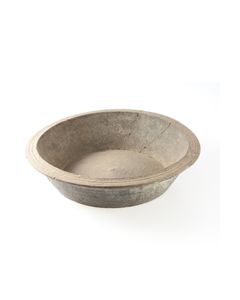 Großer, musealer römischer Teller
Großer, musealer römischer TellerRauwandig, doppelt gerillter Horizontalrand, konkaver Boden. Steile, konisch zulaufende Wandung.
Price: on request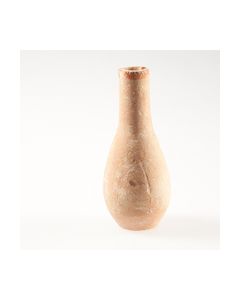 Birnenförmiges, antikes Tonfläschchen
Birnenförmiges, antikes TonfläschchenBirnenförmiges, römisches Unguentarium, orangefarbener Ton. Vermutlich als Parfümfläschchen verwendet. Ca. 1. Jh. n. Chr.
Price: on request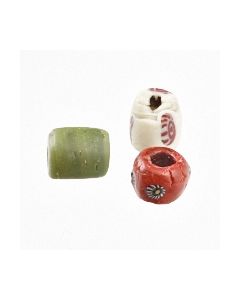 Three Roman beads
Three Roman beadsThe group consists of two Roman eye beads with multi-coloured glass inlays and one bead from beautiful green glass. Roman Imperial times.
Price: on request Three ancient beads
Three ancient beadsThe group consists of two ancient eye beads with multi-coloured glass inlays and one bead from beautiful yellow glass. Roman Imperial times.
Price: on request Three ancient beads
Three ancient beadsThe group consists of two ancient eye beads with multi-coloured glass inlays and one bead from beautiful yellow glass. Roman Imperial times.
Price: on request Three ancient beads
Three ancient beadsThe group consists of two ancient eye beads with multi-coloured glass inlays and one bead from beautiful green glass. Roman Imperial times.
Price: on request Three ancient beads
Three ancient beadsThe group consists of one ancient eye bead with multi-coloured glass inlays and two beads from beautiful green glass. Roman Imperial times.
Price: on request Ornate Late Roman fibula
Ornate Late Roman fibulaNicely patinated body with incised linear decorations. Well preserved multi-part spring. 2nd to 5th cent. AD.
Price: on request Massive antike Pfeilspitze aus Eisen
Massive antike Pfeilspitze aus EisenQuadratischer Querschnitt, verjüngt sich zur Spitze hin. Massiv. Für Alter und Material sehr schwache Korrosion. 9. - 13. Jh. n. Chr.
Price: on request Dick-Nacken-Hohl-Beil
Dick-Nacken-Hohl-BeilNeolithisches Beil aus Feuerstein. Dechsel Typ Horneby. 118mm lang. Fundort: Boltinge, Fünen, Dänemark.
Price: on request Mesolithische Axt
Mesolithische AxtErtebølle-Ellerbek-Kultur. 85mm lang, Salzwasserpatina. Fundort Fyns Hoved, Dänemark. Etwa 5000 v. Chr.
Price: on request Lot von 10 exzellent erhaltenen römischen Münzen aus Rheinländischer Sammlung
Lot von 10 exzellent erhaltenen römischen Münzen aus Rheinländischer SammlungGenerell sehr gute Erhaltung, schöne Fundpatina. Spätantike Bronzemünzen, Durchmesser 16 - 22 mm.
Price: on request Lot von 10 römischen Münzen aus Rheinländischer Sammlung
Lot von 10 römischen Münzen aus Rheinländischer SammlungInteressante Reverse. Generell sehr gute Erhaltung, schöne Fundpatina. Spätantike Bronzemünzen, Durchmesser 16 - 19 mm.
Price: on request Lot von 10 römischen Münzen aus Rheinländischer Sammlung
Lot von 10 römischen Münzen aus Rheinländischer SammlungGenerell sehr gute Erhaltung, schöne Fundpatina. Spätantike Bronzemünzen, Durchmesser 16 - 19 mm.
Price: on request Antike Pfeilspitze aus Eisen
Antike Pfeilspitze aus EisenDreiflüglige Pfeilspitze aus Eisen. Für das Material exzellente Erhaltung, nur minimal korrodiert. Indo-Skythisch, 2. Jh. v. Chr. - 4. Jh. n. Chr.
Price: on request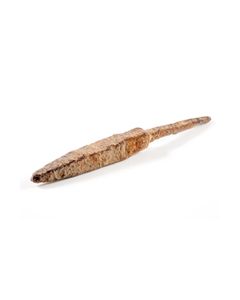 Massive antike Pfeilspitze aus Eisen
Massive antike Pfeilspitze aus EisenQuadratischer Querschnitt, massive Ausführung. Für Alter und Material sehr schwache Korrosion. 9. - 13. Jh. n. Chr.
Price: on request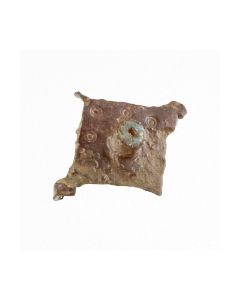 Roman fibula from the Richard Hattatt collection
Roman fibula from the Richard Hattatt collectionLozenge-shaped ancient roman fibula. The piece is published in the standard work "Iron Age and Roman Brooches". Found in Britain.
Price: on request Scarab with geometric motive
Scarab with geometric motiveThe lower side exhibits wrapped cords. A nice example of Egyptian art during the Second Intermediate Period. This scarab is described in the catalogue of Irène Gautier-Vodoz.
Price: on request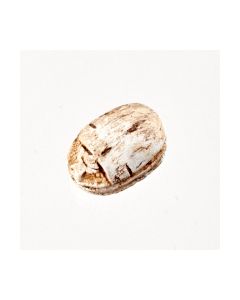 Scarab with lotus motive
Scarab with lotus motiveAncient Egyptian amulet seal with beautiful motive. Six lotus flowers are forming volutes. This scarab is described in the catalogue of Irène Gautier-Vodoz.
Price: on request

